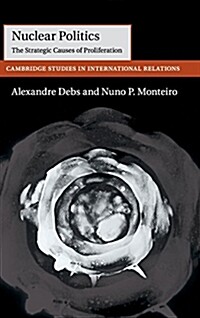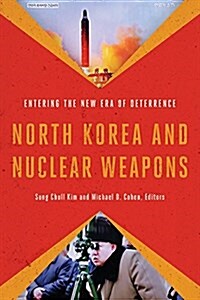
단행본Cambridge studies in international relations 142
Nuclear Politics: The Strategic Causes of Proliferation
- 발행사항
- New York: Cambridge University Press, 2017
- 형태사항
- xxvii, 618p. : 24cm
- ISBN
- 9781107108097 (hardback : alk. paper) 9781107518575 (paperback : alk. paper)
- 청구기호
- 355.02 D278n
소장정보
| 위치 | 등록번호 | 청구기호 / 출력 | 상태 | 반납예정일 |
|---|---|---|---|---|
이용 가능 (1) | ||||
| 1자료실 | 00016364 | 대출가능 | - | |
이용 가능 (1)
- 등록번호
- 00016364
- 상태/반납예정일
- 대출가능
- -
- 위치/청구기호(출력)
- 1자료실
책 소개
When do states acquire nuclear weapons? Overturning a decade of scholarship focusing on other factors, Debs and Monteiro show in Nuclear Politics that proliferation is driven by security concerns. Proliferation occurs only when a state has both the willingness and opportunity to build the bomb. A state has the willingness to nuclearize when it faces a serious security threat without the support of a reliable ally. It has the opportunity when its conventional forces or allied protection are sufficient to deter preventive attacks. This explains why so few countries have developed nuclear weapons. Unthreatened or protected states do not want them; weak and unprotected ones cannot get them. This powerful theory combined with extensive historical research on the nuclear trajectory of sixteen countries will make Nuclear Politics a standard reference in international security studies, informing scholarly and policy debates on nuclear proliferation - and US non-proliferation efforts - for decades to come.
A comprehensive theory of the causes of nuclear proliferation, alongside an in-depth analysis of sixteen historical cases of nuclear development.
A comprehensive theory of the causes of nuclear proliferation, alongside an in-depth analysis of sixteen historical cases of nuclear development.
목차
Figures and tables; Abbreviations and acronyms; Preface; 1. Introduction; 2. A strategic theory of nuclear proliferation; 3. The historical patterns of nuclear proliferation; 4. Adversaries and proliferation; 5. Loose allies and proliferation; 6. Close allies and proliferation; 7. Conclusion; Appendix 1. Coding rules; Appendix 2. Other cases of nuclear development; Appendix 3. Puzzling cases of no nuclear development; Appendix 4. Formal theory; Bibliography; Index.





